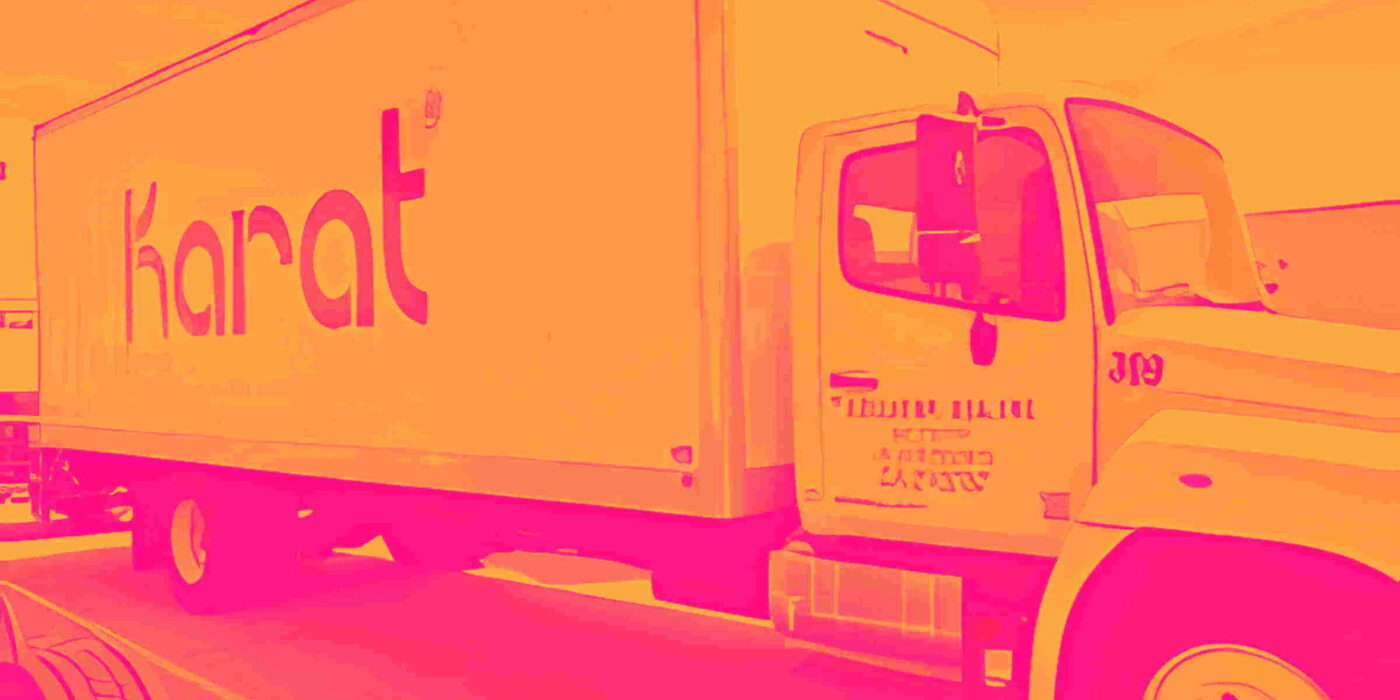
Foodservice packaging supplier Karat Packaging (NASDAQ: KRT) met Wall Streets revenue expectations in Q3 CY2025, with sales up 10.4% year on year to $124.5 million. The company expects next quarter’s revenue to be around $113.8 million, coming in 1.7% above analysts’ estimates. Its non-GAAP profit of $0.37 per share was 5.1% below analysts’ consensus estimates.
Is now the time to buy Karat Packaging? Find out by accessing our full research report, it’s free for active Edge members.
Karat Packaging (KRT) Q3 CY2025 Highlights:
- Revenue: $124.5 million vs analyst estimates of $124.1 million (10.4% year-on-year growth, in line)
- Adjusted EPS: $0.37 vs analyst expectations of $0.39 (5.1% miss)
- Adjusted EBITDA: $13.05 million vs analyst estimates of $13.01 million (10.5% margin, in line)
- Revenue Guidance for Q4 CY2025 is $113.8 million at the midpoint, above analyst estimates of $111.9 million
- Operating Margin: 6.9%, down from 10% in the same quarter last year
- Free Cash Flow was -$2.51 million, down from $18.63 million in the same quarter last year
- Market Capitalization: $509.6 million
“Despite ongoing trade uncertainty, we delivered another quarter of record sales, driven by strong volume growth, a favorable product mix, and continued sequential pricing improvements. We experienced double-digit growth across all major markets, especially in Texas and California,” said Alan Yu, Chief Executive Officer.
Company Overview
Founded as Lollicup, Karat Packaging (NASDAQ: KRT) distributes and manufactures environmentally-friendly disposable foodservice packaging solutions.
Revenue Growth
A company’s long-term performance is an indicator of its overall quality. Any business can experience short-term success, but top-performing ones enjoy sustained growth for years. Thankfully, Karat Packaging’s 10% annualized revenue growth over the last five years was solid. Its growth beat the average industrials company and shows its offerings resonate with customers.
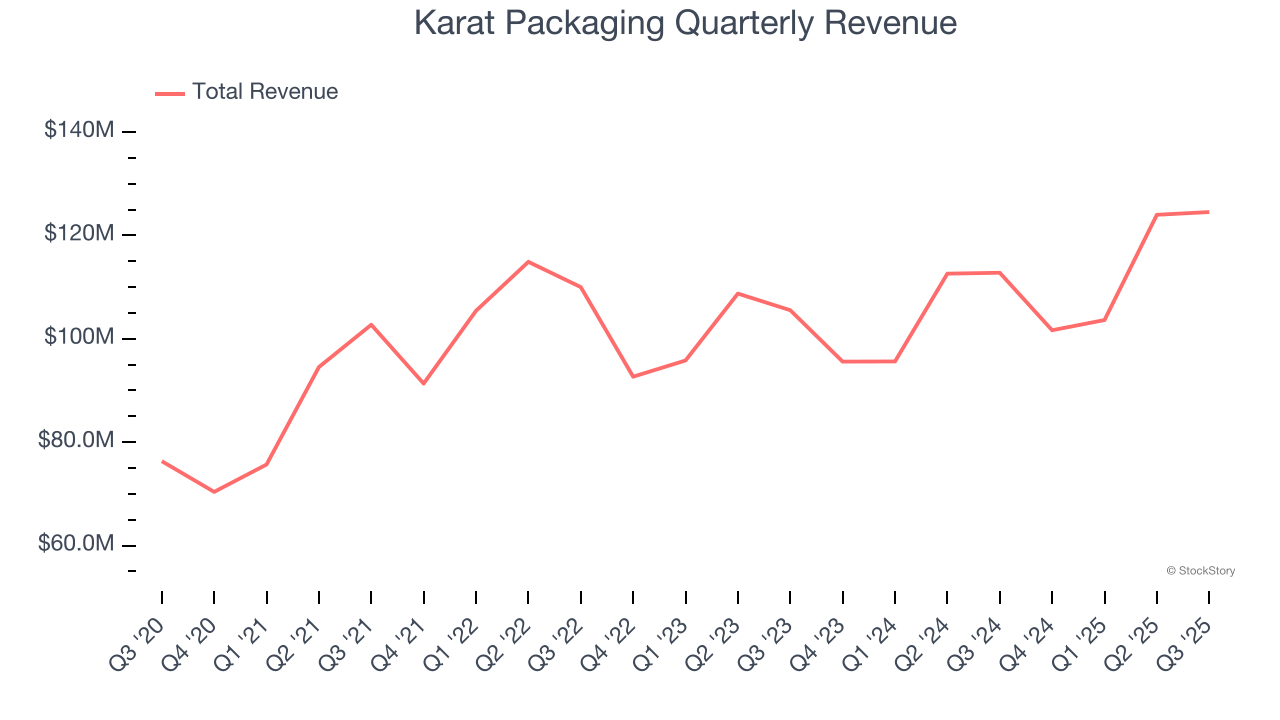
We at StockStory place the most emphasis on long-term growth, but within industrials, a half-decade historical view may miss cycles, industry trends, or a company capitalizing on catalysts such as a new contract win or a successful product line. Karat Packaging’s recent performance shows its demand has slowed as its annualized revenue growth of 6.1% over the last two years was below its five-year trend. 
This quarter, Karat Packaging’s year-on-year revenue growth was 10.4%, and its $124.5 million of revenue was in line with Wall Street’s estimates. Company management is currently guiding for a 12% year-on-year increase in sales next quarter.
Looking further ahead, sell-side analysts expect revenue to grow 7.4% over the next 12 months, similar to its two-year rate. While this projection suggests its newer products and services will spur better top-line performance, it is still below average for the sector.
Microsoft, Alphabet, Coca-Cola, Monster Beverage—all began as under-the-radar growth stories riding a massive trend. We’ve identified the next one: a profitable AI semiconductor play Wall Street is still overlooking. Go here for access to our full report.
Operating Margin
Karat Packaging has done a decent job managing its cost base over the last five years. The company has produced an average operating margin of 8.6%, higher than the broader industrials sector.
Analyzing the trend in its profitability, Karat Packaging’s operating margin rose by 3.6 percentage points over the last five years, as its sales growth gave it operating leverage.
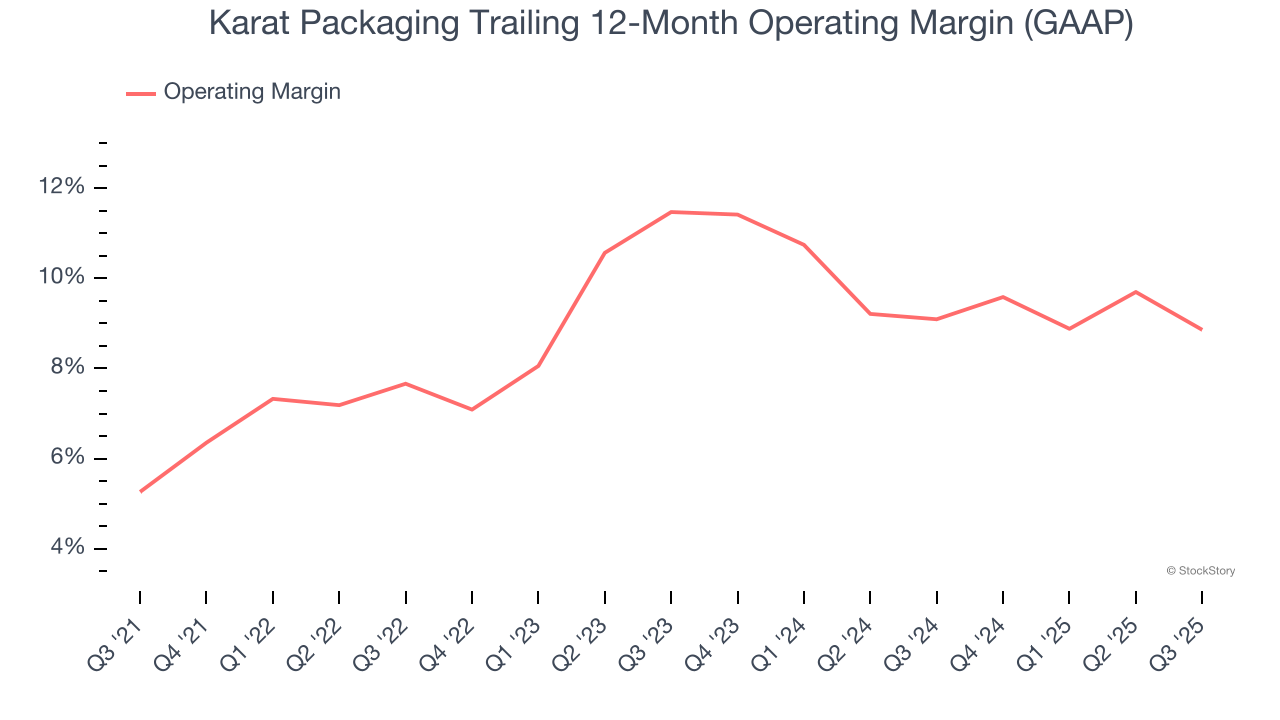
This quarter, Karat Packaging generated an operating margin profit margin of 6.9%, down 3.1 percentage points year on year. Since Karat Packaging’s gross margin decreased more than its operating margin, we can assume its recent inefficiencies were driven more by weaker leverage on its cost of sales rather than increased marketing, R&D, and administrative overhead expenses.
Earnings Per Share
We track the long-term change in earnings per share (EPS) for the same reason as long-term revenue growth. Compared to revenue, however, EPS highlights whether a company’s growth is profitable.
Karat Packaging’s full-year EPS grew at an astounding 19.2% compounded annual growth rate over the last four years, better than the broader industrials sector.
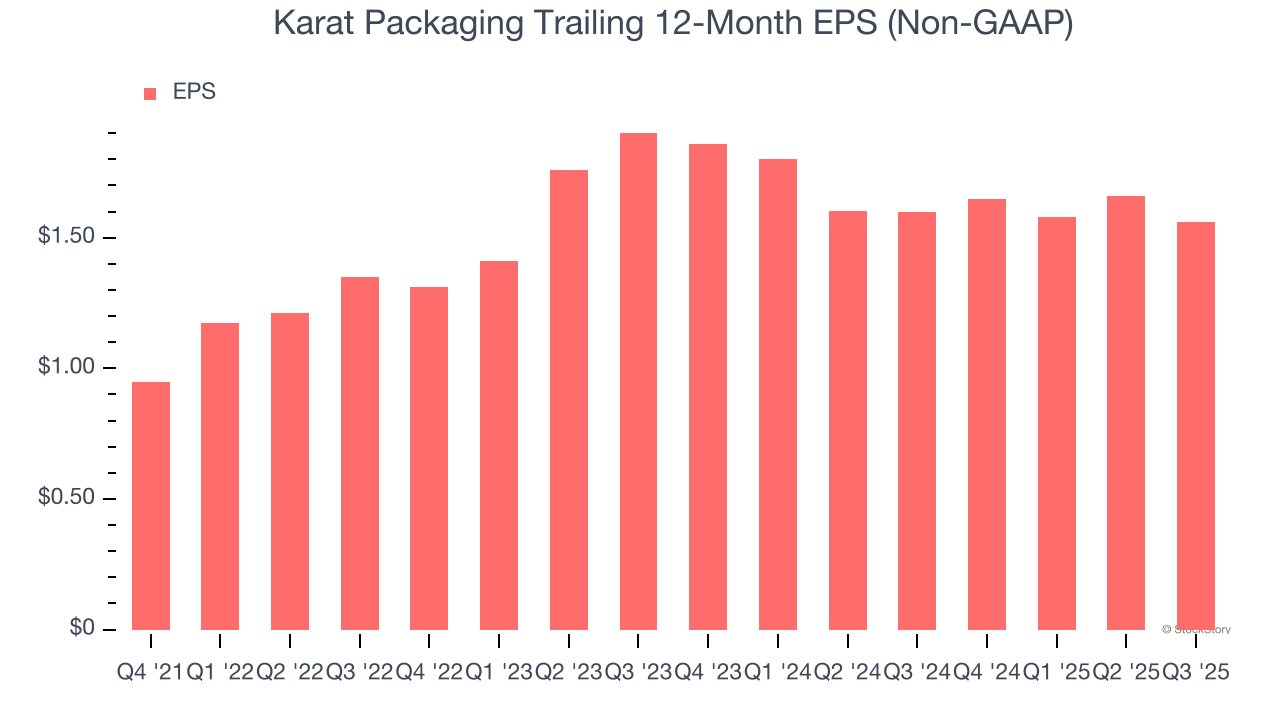
Like with revenue, we analyze EPS over a shorter period to see if we are missing a change in the business.
Sadly for Karat Packaging, its EPS declined by 9.4% annually over the last two years while its revenue grew by 6.1%. This tells us the company became less profitable on a per-share basis as it expanded.
We can take a deeper look into Karat Packaging’s earnings to better understand the drivers of its performance. Karat Packaging’s operating margin has declined over the last two yearswhile its share count has grown 1%. This means the company not only became less efficient with its operating expenses but also diluted its shareholders. 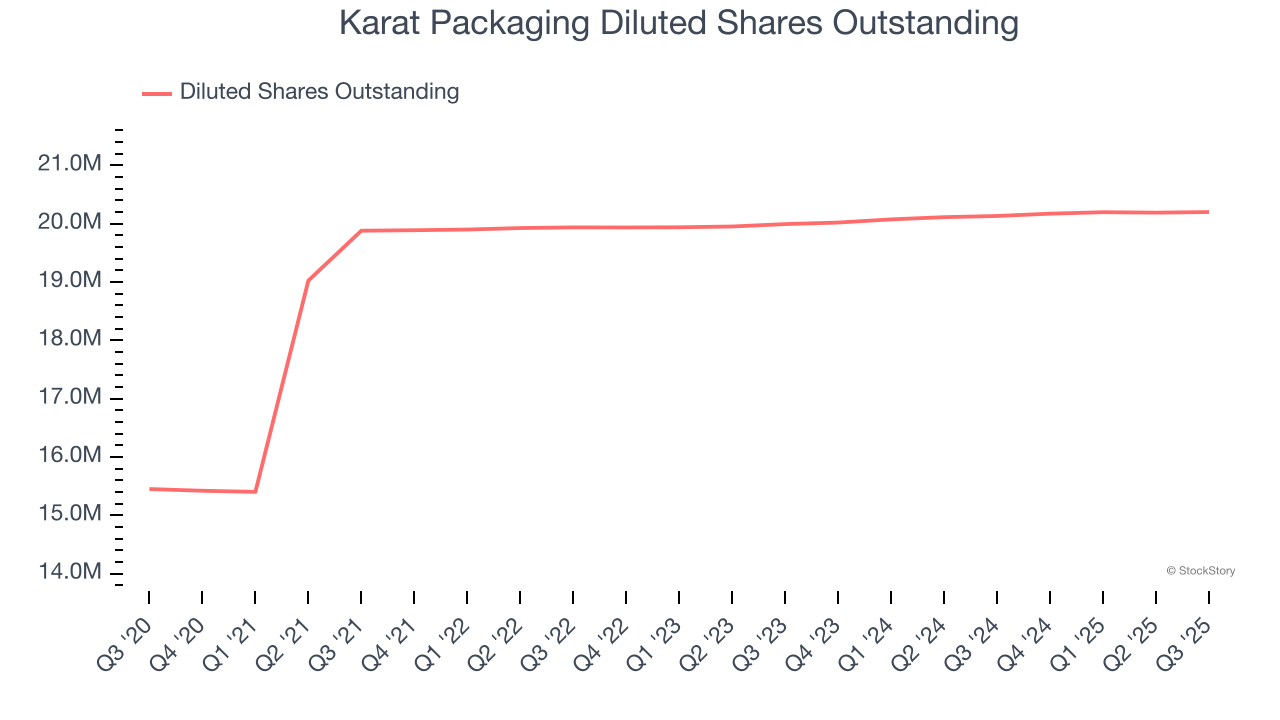
In Q3, Karat Packaging reported adjusted EPS of $0.37, down from $0.47 in the same quarter last year. This print missed analysts’ estimates, but we care more about long-term adjusted EPS growth than short-term movements. Over the next 12 months, Wall Street expects Karat Packaging’s full-year EPS of $1.56 to grow 12.2%.
Key Takeaways from Karat Packaging’s Q3 Results
It was encouraging to see Karat Packaging’s revenue guidance for next quarter beat analysts’ expectations. On the other hand, its EPS missed. Overall, this quarter could have been better. The stock traded down 1.7% to $23.60 immediately following the results.
Karat Packaging underperformed this quarter, but does that create an opportunity to invest right now? We think that the latest quarter is only one piece of the longer-term business quality puzzle. Quality, when combined with valuation, can help determine if the stock is a buy. We cover that in our actionable full research report which you can read here, it’s free for active Edge members.







